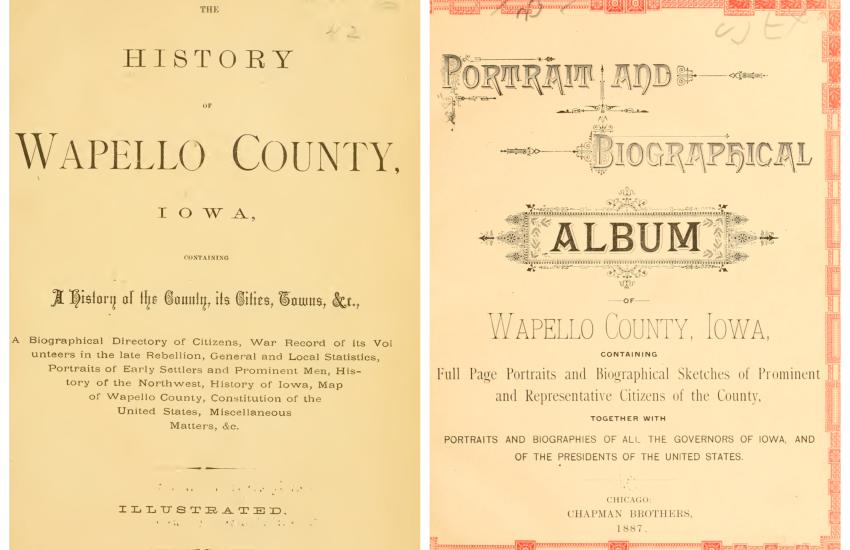Wapello County histories, 1876-1913
County histories: Easy digital access transforms an old medium for genealogists
Family storytellers with 19th century American ancestors will likely have already stumbled upon the highly useful resource represented by published U.S. county histories. But what are they exactly? How and why did they come to be? Why are some available as full text and others restricted in various ways? What's the best way online and off to find all available county history content?
I'll try to answer those questions in a two-part series for Telling Family Stories. Today, I will cover the surprising boomlet in historical book publishing that began in the American Centennial period and experienced growth through several evolutions in the form. In another post, I'll consider the transformation brought to this old medium by digitization and smart search technology, driven primarily by Google Books but also involving other players.
I'll tell both parts through the lens of my own research interest in the early settler period in Wapello County, Iowa, one of the roughly 3000 designated U.S. counties.
In researching a particular family that settled near Ottumwa, Iowa in 1843, I have been fortunate to find references to family members in several of the four Wapello County histories that were published, the last in two volumes, between 1876 and 1916. Helpfully, all of the texts are fully searchable online, or I can download a PDF of the digitized book contents for my use.
In these, I have found some specific references to the family I am following, allowing me to locate their homestead location and other facts. Beyond these direct hits, the historical, geographic and biographical information about the area in its early days has been equally useful in understanding the context of the family's circumstances.
Here I summarize a 2010 presentation about the history of county histories by institutional information provider Accessible Archives.
County history publishing was common in England in the 16th and 17th centuries, and the first colonists brought the tradition to America. Of Plimoth Plantation, by William Bradford himself, is the first example. More than 5000 volumes of county history have been published covering about 80 percent of U.S. counties. Most of the publication of these histories occurred during defined bumps connected to American history.
The first surge of publications occurred in the centennial period in the 1870s when Americans took stock of their first century of history.


